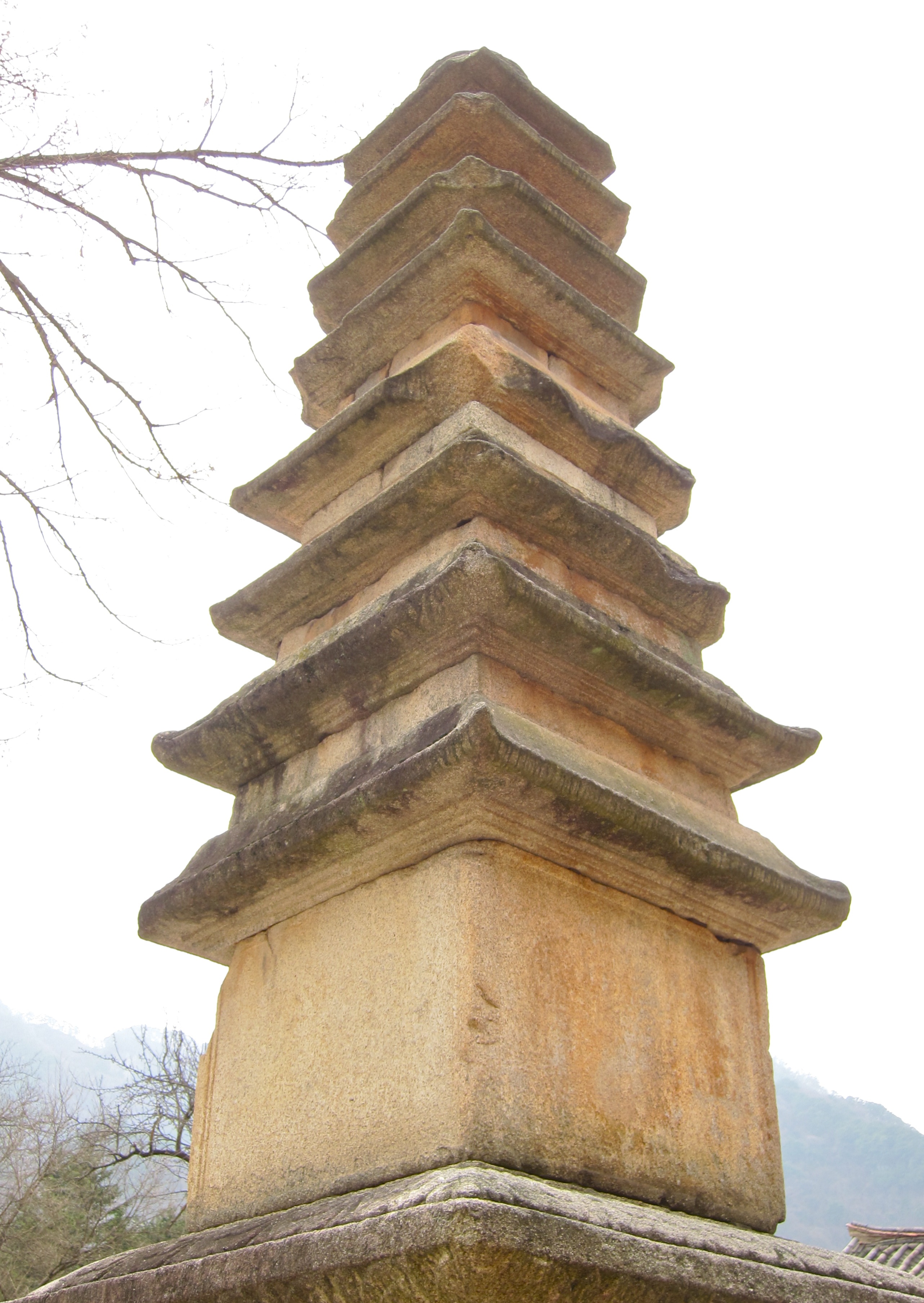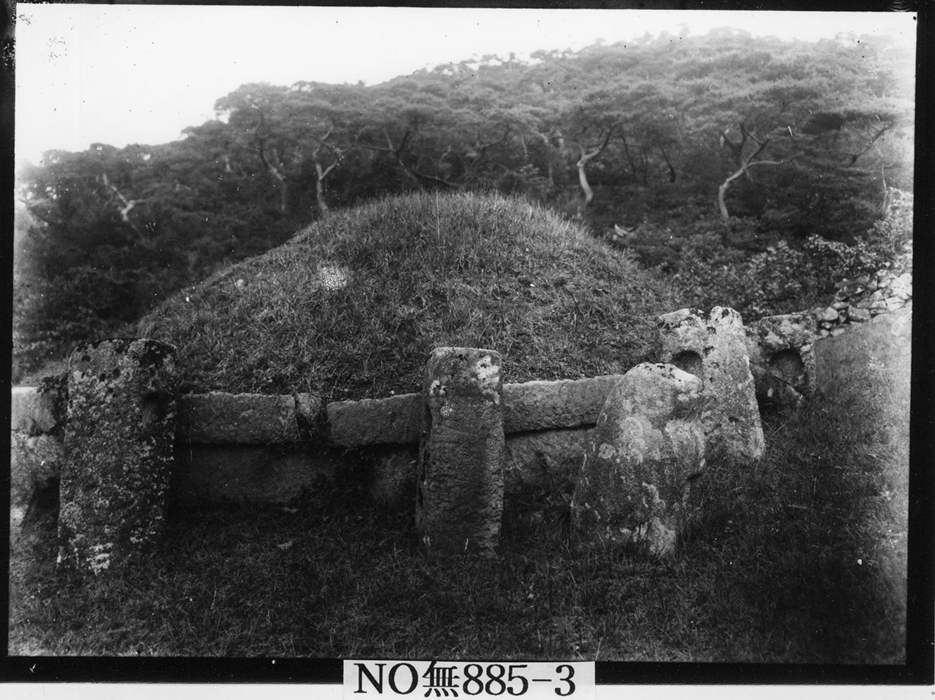|
Royal Tombs Of The Goryeo Dynasty
The Royal Tombs of the Goryeo Dynasty are a group of tombs of members of the Korean Goryeo Dynasty (918 – 1392). The tombs The royal tombs are scattered around southwestern North Hwanghae Province, with most of them located within 20 kilometers of Kaesong, the Goryeo capital. Most tombs are located in Kaepung County, which borders Kaesong to the west, though there are also a significant number in Changpung County, which borders Kaesong to the east. Some tombs, all unidentified, are also located within Kaesong itself. Koryo-era royal tombs followed the guidelines outlined in Chinese Confucian texts, such as the ''Book of Rites'' (''Li Ji'') and the ''Rites of Zhou'' (''Zhou Li''). Many factors went into consideration when deciding the location of a tomb, such as the distance from Kaesong, the distance in relation to other royal tombs, the accessibility of the location, and the tradition of Feng Shui (known as 'Pungsu' in Korean). The tomb construction also took into account trad ... [...More Info...] [...Related Items...] OR: [Wikipedia] [Google] [Baidu] |
Tomb Of King Wanggon
The Mausoleum of King Wang Kŏn, more correctly known as the Hyŏllŭng Royal Tomb, is a mausoleum located Haesong Village, Kaepung County near Kaesŏng, North Korea. The tomb belongs to the founder of the Goryeo Dynasty, Wang Kon, who received the temple name 'Taejo' and was the first monarch to unify the entire Korean peninsula after the subjugation the southern states of Silla and Baekje. Construction on the tomb began after the King's death in 943. Nonetheless, by the end of the occupation period there was little left of the original tomb, which had deteriorated due to abandonment and looting by Japanese forces. The tomb was heavily reconstructed in 1994, and all of the original buildings and statues were cleared away in order to accomplish its "restoration". The site is nominated for World Heritage status. See also * Tomb of King Gongmin * Tomb of King Tongmyong The Tomb of King Dongmyeong, also known as the Tomb of King Tongmyŏng, is a mausoleum located in near Ryong ... [...More Info...] [...Related Items...] OR: [Wikipedia] [Google] [Baidu] |
National Treasures Of North Korea
A National Treasure (국보; 國寶 : ) is a tangible artifact, site, or building deemed by the Government of North Korea to have significant historical or artistic value to the country. History The first list of Korean cultural treasures was designated by Governor-General of Korea in 1938 during the Japanese occupation with "The Act of Treasures of the Joseon dynasty". Nos. 1-50 Nos. 51-100 Nos. 101-150 Nos. 151-193 See also * Cultural assets of North Korea * Natural monuments of North Korea * National Treasure (South Korea) * Complex of Koguryo Tombs * History of Korea * Culture of Korea The traditional culture of Korea is the shared cultural and historical heritage of Korea and southern Manchuria before the division of Korea in 1945. Manchuria refers to the ancient geographical and historical region in Northeast Asia, includ ... * List of World Heritage Sites in Asia#North Korea (1) Footnotes {{reflist References * http://www.kcpia.or.kr/kcpia_mail/mail_tem ... [...More Info...] [...Related Items...] OR: [Wikipedia] [Google] [Baidu] |
Queen Heonjeong
Queen Heonjeong of the Hwangju Hwangbo clan (; 960/5–993) or formally called as Grand Queen Mother Hyosuk () during her son's reign, was a Goryeo royal family member as the third daughter (formally youngest) of Wang Uk and youngest sister of King Seongjong who became the fourth wife of her half first cousin, King Gyeongjong. After his death, she had an affair with her half uncle which they eventually became the biological parent of King Hyeonjong. From this marriage, Queen Heonjeong became the fourth reigned Goryeo queen who followed her maternal clan after Queen Heonae, her elder sister. Not much records left about her early life beside that she and her siblings were raised by their paternal grandmother since child. Affair matter with Wang Uk After King Gyeongjong's death, she became a widowed on her mid-twenties and out the palace, lived in her own mansion in Gaegyeong which close to her half uncle, Wang Uk's house in southern Wangnyun Temple (왕륜사, 王輪寺), ... [...More Info...] [...Related Items...] OR: [Wikipedia] [Google] [Baidu] |
Anjong Of Goryeo
Anjong of Goryeo (died 24 July 996), personal name Wang Uk, was a Goryeo Royal Prince as the only child of King Taejo and Queen Sinseong. He later became the father of King Hyeonjong. Biography After King Gyeongjong's death in 981, Queen Heonjeong started to live in her own mansion, which was close to Wang Uk's, so the two often met and spent time together. Eventually, Heonjeong had a son with him, Wang Sun (왕순; the future Hyeonjong of Goryeo), but died during childbirth. Wang Uk was exiled to Sasu-hyeon (nowadays Sacheon-si, Gyeongsangnam-do, South Korea) because of his affair with the widowed queen, who was also his niece. Wang Sun was entrusted to one of King Seongjong's nannies, but missed his father, so the king decided to send Sun to live with Wang Uk. Together, they lived in Gwiyangji until Uk's death on 24 July 996. Wang Sun returned to the capital in 997, and, when he ascended to the throne, granted a posthumous name to his father. Family *Father: Wang Geon, Kin ... [...More Info...] [...Related Items...] OR: [Wikipedia] [Google] [Baidu] |
Hyeonjong Of Goryeo
Hyeonjong of Goryeo (1 August 992 – 17 June 1031, r. 1009–1031) was the 8th ruler of the Goryeo dynasty of Korea. He was a grandson of King Taejo. He was appointed by the military leader Gang Jo, whom the previous King Mokjong had called upon to destroy a plot by Kim Chi-yang. In 1010, the Khitan attacked again during an internal Goryeo power struggle. Hyeonjong was forced to flee the capital temporarily and directed the court to move far south to the port city of Naju. In the end, Goryeo repulsed the Khitan and forced them to withdrew from the Korean land. In 1019, when Goryeo continued to refuse to submit or return the northern territories, the Khitan attacked once more. Goryeo generals, including Gang Gam-chan, were able to inflict heavy losses on the Khitan army in the Battle of Kwiju. The Khitan withdrew without achieving their demands and never again invaded Goryeo. Both the Liao Dynasty and Goryeo enjoyed a time of peace, and their cultures were at their height. ... [...More Info...] [...Related Items...] OR: [Wikipedia] [Google] [Baidu] |
Stone Sheep At King Kongmin's Mausoleum
In geology, rock (or stone) is any naturally occurring solid mass or aggregate of minerals or mineraloid matter. It is categorized by the minerals included, its chemical composition, and the way in which it is formed. Rocks form the Earth's outer solid layer, the crust, and most of its interior, except for the liquid outer core and pockets of magma in the asthenosphere. The study of rocks involves multiple subdisciplines of geology, including petrology and mineralogy. It may be limited to rocks found on Earth, or it may include planetary geology that studies the rocks of other celestial objects. Rocks are usually grouped into three main groups: igneous rocks, sedimentary rocks and metamorphic rocks. Igneous rocks are formed when magma cools in the Earth's crust, or lava cools on the ground surface or the seabed. Sedimentary rocks are formed by diagenesis and lithification of sediments, which in turn are formed by the weathering, transport, and deposition of existing rocks. M ... [...More Info...] [...Related Items...] OR: [Wikipedia] [Google] [Baidu] |
Gyeongjong Of Goryeo
Gyeongjong of Goryeo (9 November 955 – 13 August 981) (r. 975–981) was the fifth ruler of the Goryeo dynasty of Korea. He was the eldest son of Gwangjong and was confirmed as Crown Prince in the year of his birth. Upon rising to the throne, Gyeongjong established the ''Jeonsigwa'' (land-allotment system). Later, according to the ''Goryeo-sa'', he avoided politics and royalty, and spent his time cavorting with commoners. Family *Father: Gwangjong of Goryeo (고려 광종) **Grandfather: Taejo of Goryeo (고려 태조) **Grandmother: Queen Sinmyeong (신명왕후) *Mother: Queen Daemok (대목왕후) **Grandfather: Taejo of Goryeo (고려 태조) **Grandmother: Queen Sinjeong (신정왕후) *Consorts and their Respective Issue(s): # Queen Heonsuk of the Gyeongju Gim clan (헌숙왕후 김씨) – No issue. # Queen Heonui of the Chungju Yu clan (헌의왕후 유씨); first cousin – No issue. # Queen Heonae of the Hwangju Hwangbo clan (헌애왕후 황보씨); half first co ... [...More Info...] [...Related Items...] OR: [Wikipedia] [Google] [Baidu] |
Gwangjong Of Goryeo
Gwangjong of Goryeo (925 – 4 July 975), personal name Wang So, was the fourth king of Goryeo. Biography Birth and early life Gwangjong was born in 925 as Wang So, fourth son of King Taejo, who had founded Goryeo in 918. His mother was Queen Sinmyeongsunseong of the Chungju Yu clan, who also gave birth to princes Wang Tae, Wang Yo, Wang Jeong, Jeungteong-guksa, as well as the princesses, Princess Nakrang and Princess Heungbang. Moreover, Gwangjong had twenty half-brothers and seven half-sisters from his father's other marriages. As he had three older brothers, Mu, Tae and Yo, he was far from the succession to the throne; however, Wang Tae died early on, and Wang Mu died in 945, three years after being crowned king, leaving the throne to Wang Yo, who ruled Goryeo for four years as Jeongjong. Before dying, he decided to make Wang So his heir instead of his one and only son, Prince Gyeongchunwon. According to contemporary Choe Seungno, Gwangjong "was careful and laconic, but ... [...More Info...] [...Related Items...] OR: [Wikipedia] [Google] [Baidu] |
Koguryo
Goguryeo (37 BC–668 AD) ( ) also called Goryeo (), was a Korean kingdom located in the northern and central parts of the Korean Peninsula and the southern and central parts of Northeast China. At its peak of power, Goguryeo controlled most of the Korean peninsula, large parts of Manchuria and parts of eastern Mongolia and Inner Mongolia. Along with Baekje and Silla, Goguryeo was one of the Three Kingdoms of Korea. It was an active participant in the power struggle for control of the Korean peninsula and was also associated with the foreign affairs of neighboring polities in China and Japan. The ''Samguk sagi'', a 12th-century text from Goryeo, indicates that Goguryeo was founded in 37 BC by Jumong (), a prince from Buyeo, who was enthroned as Dongmyeong. Goguryeo was one of the great powers in East Asia, until its defeat by a Silla–Tang alliance in 668 after prolonged exhaustion and internal strife caused by the death of Yeon Gaesomun (). After its fall, its territory w ... [...More Info...] [...Related Items...] OR: [Wikipedia] [Google] [Baidu] |




